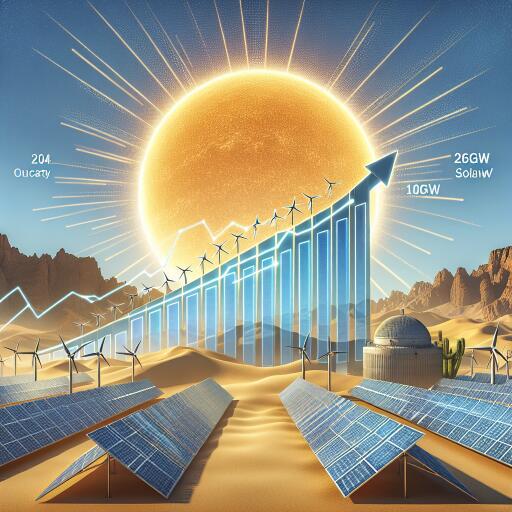
Middle East Solar Capacity Surge: A Bright Future Ahead
The landscape of energy in the Middle East is undergoing a monumental shift, with solar energy at the forefront of this transformation. Current assessments predict an exhilarating leap in solar energy capacity across the region, heralding a new era of renewable energy dominance.
At the close of 2023, the Middle East’s embrace of solar energy was already evident, boasting an impressive solar capacity exceeding 16 gigawatts (GW). Projections for the near future are even more striking, with an expected surge to nearly 23 GW by the end of 2024. This trajectory is not slowing down; experts anticipate the region will achieve an astounding 100 GW of solar capacity by 2030. This growth is attributed to an array of factors, including the pivotal role of green hydrogen projects, which are accelerating the expansion at an annual growth rate of 30 percent.
The spotlight is particularly bright on solar photovoltaic (PV) technology. Forecasts indicate that solar PV will not only lead the region’s renewable energy sources but also come to represent more than half of its power supply by the midpoint of the century. This is a remarkable leap from its 2 percent share in 2023, signaling a significant transformation in the region’s energy landscape.
Despite the current dependence on fossil fuels, which accounted for 93 percent of the total power generation at the end of 2023, a significant shift is on the horizon. Renewables made up a mere 3 percent, with nuclear and hydro trailing at 2 percent each. The changing tides, however, predict renewable energy sources climbing to cover 30 percent of the region’s installed capacity by 2030, with the potential to balloon to 75 percent by 2050. This shift marks a departure from the traditional reliance on fossil fuels towards a greener and more sustainable energy mix.
Gas-fired power will not exit the stage entirely, continuing to play a crucial role in the Middle East’s energy ecosystem. Due to the region’s limited hydropower potential and the low cost of gas, gas-fired power will serve as a primary, and later, transitional fuel. Nevertheless, the dominance of gas in the power generation mix is expected to diminish significantly, dropping from a hefty 74 percent at the end of 2023 to 46 percent by 2040, and further down to 22 percent by 2050.
This transformative journey towards solar-powered futures represents not just an evolution in energy production methods but underscores the Middle East’s commitment to sustainable and eco-friendly practices. As the region harnesses the sun’s boundless energy, it sets a precedent for global renewable energy initiatives, shining a light on the path to a greener, more sustainable world.
The surge in solar capacity in the Middle East is a beacon of progress, illustrating the region’s pivotal role in the global shift towards renewable energy. With ambitious targets and a clear vision for the future, the Middle East is poised to become a leading light in the solar revolution, contributing significantly to global efforts in combating climate change and fostering a sustainable future for all.





Leave a Reply